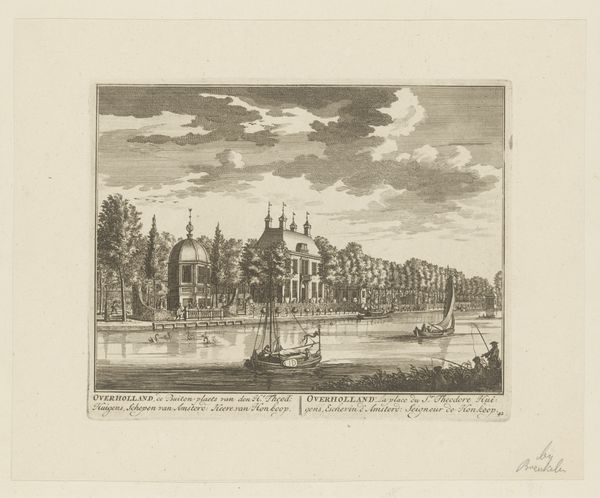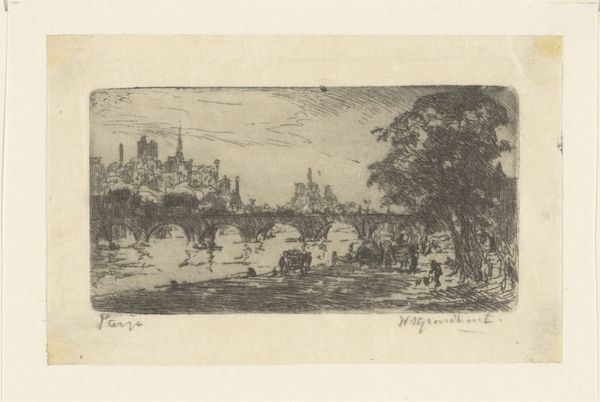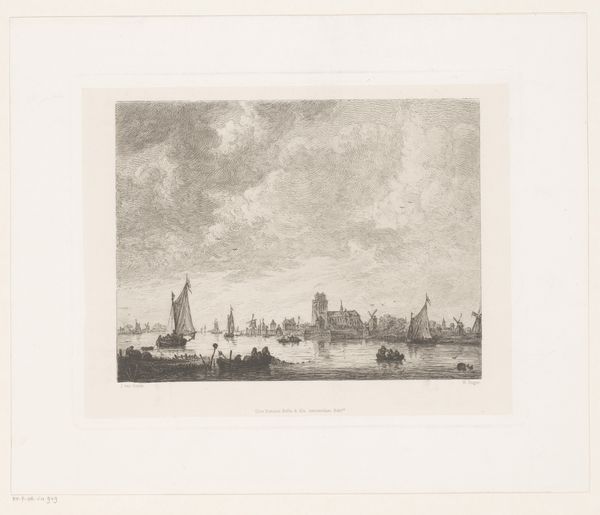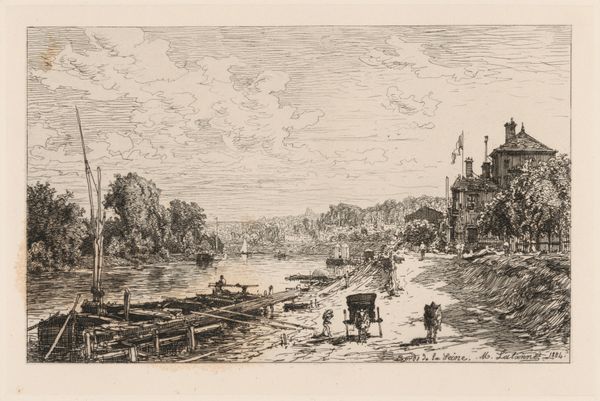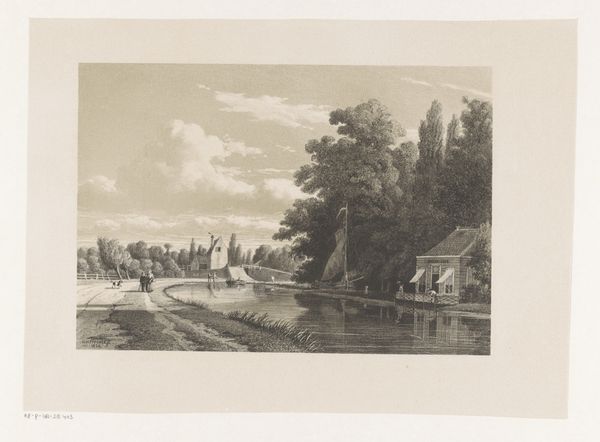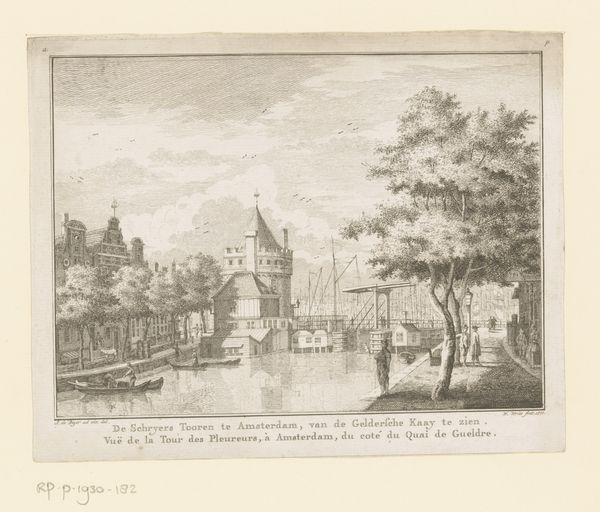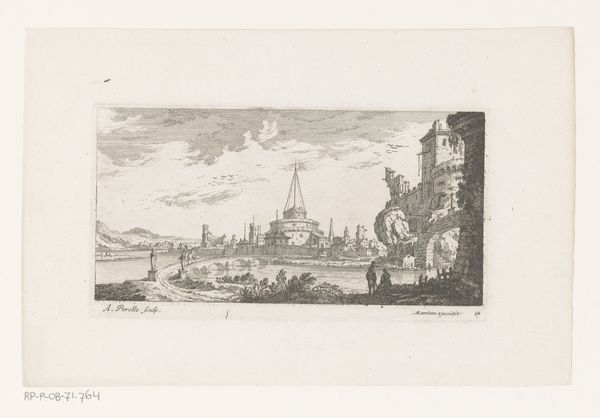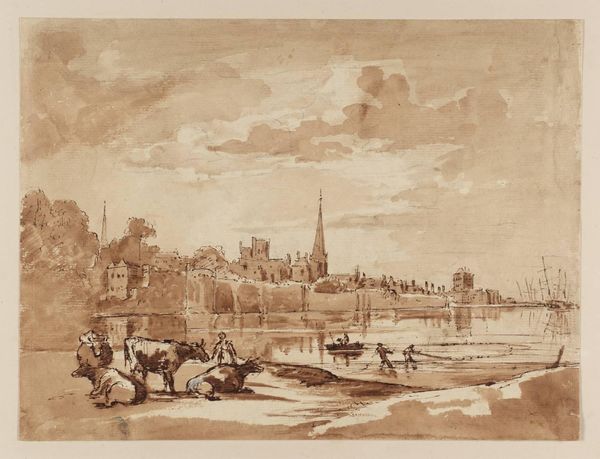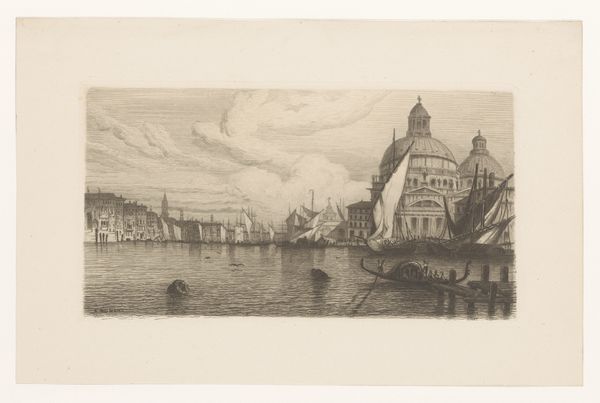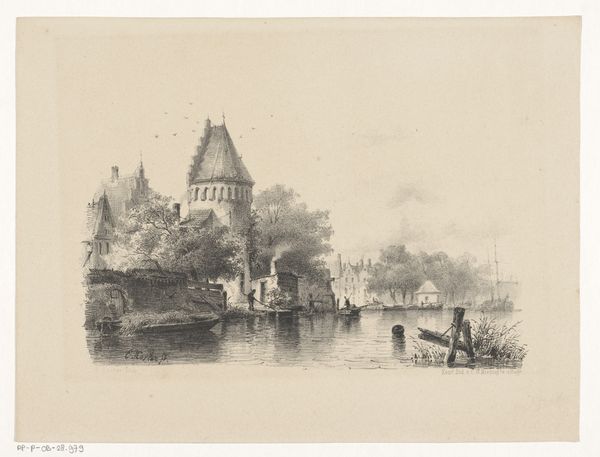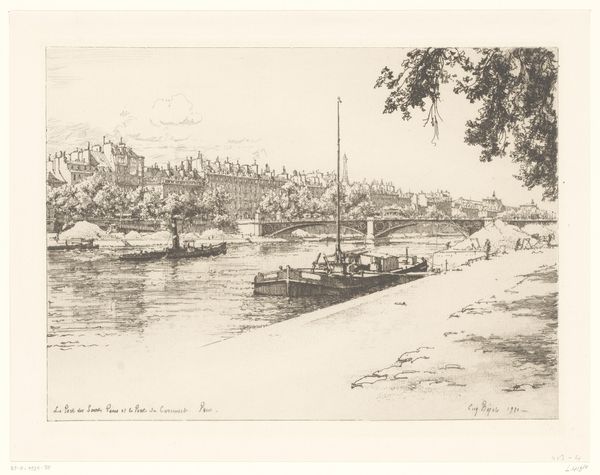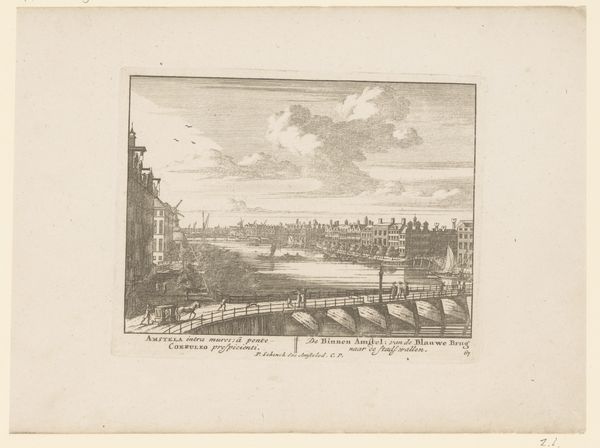
print, etching
# print
#
etching
#
landscape
#
etching
#
cityscape
#
realism
Dimensions: height 160 mm, width 240 mm
Copyright: Rijks Museum: Open Domain
Curator: Auguste Numans created this etching, possibly of Bruges, sometime between 1833 and 1879. It's titled "Gezicht op een stad, mogelijk Brugge". Editor: It evokes a sense of placid industry, doesn't it? The monochromatic etching creates this subtle contrast between the city’s burgeoning commerce and an almost sleepy sense of temporal stasis. Curator: Absolutely. As an etching, the material process involved a carefully prepared metal plate, acid-resistant wax, and a needle for inscription. The controlled corrosion achieved through acid reveals so much about the techniques used to mass-produce imagery and disseminate views of urban life at the time. Editor: And thinking about Bruges in particular, this cityscape offers us a glimpse into its evolving social and economic fabric. Look at the waterways teeming with boats – symbols of trade and labor—integral to Bruges' identity but also a means of controlling access and facilitating commerce for those in power. Curator: Precisely. Consider the division of labor involved: the plate preparation, the etching itself, and the printing—each task possibly done by different hands. Numans as the "artist" still relies on an entire infrastructure of production. Editor: That's interesting. But who gets to determine the "official" view and story when urban environments become commodified, and when these images reinforce hierarchies of what parts of the city are aesthetically pleasing? Are we only seeing it through the privileged lens of the artist, overlooking perhaps the conditions of the working classes that were actually fueling the trade depicted here? Curator: Good point. It challenges the idea of the singular artistic genius—the work reflects a network of makers and even the economic structures underpinning that process. Editor: We need to consider whose stories are being told through this etching and whose experiences are conspicuously missing, inviting us to really investigate urban existence during this historical moment. Curator: Indeed. This etching becomes less about simple documentation and more about exposing complex relationships between industrial processes, urban identity, and potential social inequalities within that era. Editor: It prompts us to think beyond its charming aesthetics to engage in more meaningful conversations of production and its possible impact on 19th-century Bruges, while asking some poignant questions. Curator: For sure, it certainly underscores the collaborative processes in play, bringing out complex social considerations to further shape art.
Comments
No comments
Be the first to comment and join the conversation on the ultimate creative platform.

